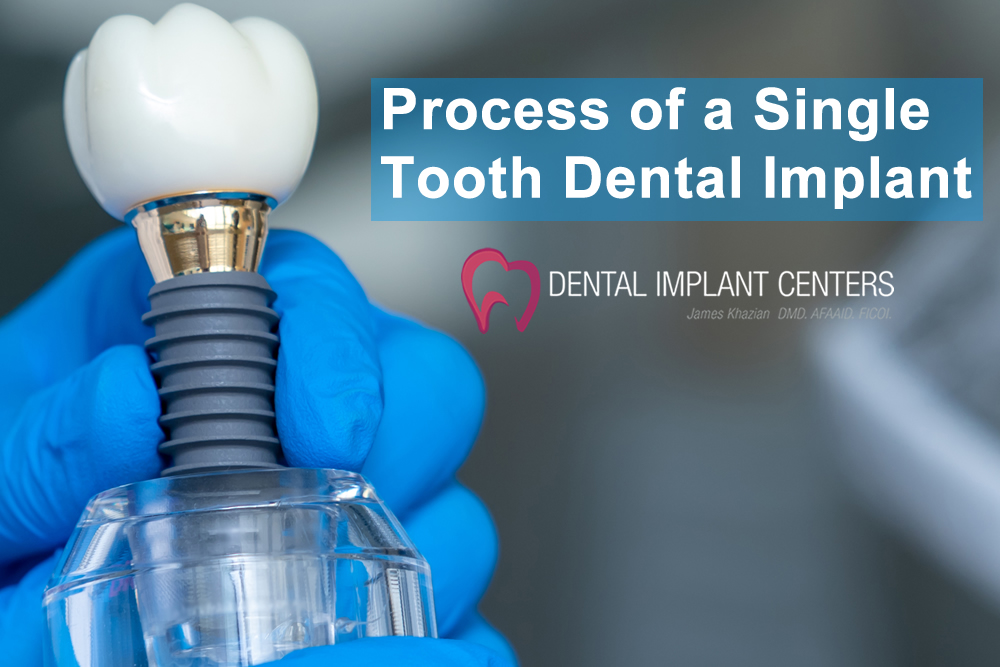Summary
When it comes to replacing a missing tooth, dental implants are often considered the gold standard. Unlike bridges or dentures, a dental implant is designed to mimic the natural tooth root, providing both strength and stability.
Process of a Single Tooth Dental Implant
When it comes to replacing a missing tooth, dental implants are often considered the gold standard. Unlike bridges or dentures, a dental implant is designed to mimic the natural tooth root, providing both strength and stability. If you’re considering this treatment, you might be wondering what the process involves. Here’s a step-by-step breakdown of how a single tooth dental implant is placed and restored.
1. Initial Consultation and Examination
The journey begins with a comprehensive dental exam. During this stage, your dentist or oral surgeon will:
- Review your medical history.
- Take dental X-rays and 3D scans to assess your bone structure.
- Discuss your options and determine whether you’re a good candidate for an implant.
If your jawbone is too thin or weak to support the implant, additional procedures like a bone graft may be recommended before proceeding.
2. Treatment Planning
Once you’re cleared for the procedure, your dentist creates a customized treatment plan. This plan maps out the exact placement of the implant and ensures the replacement tooth will blend seamlessly with your natural smile.
3. Tooth Extraction (If Needed)
If the damaged or failing tooth is still present, it must be carefully removed. In some cases, the implant can be placed immediately after extraction, but often the area is given time to heal before moving forward.
4. Dental Implant Placement Surgery
This is the first major step of the procedure. Here’s what happens:
- Local anesthesia or sedation is used to keep you comfortable.
- A small incision is made in the gum to expose the jawbone.
- A tiny hole is drilled into the bone, and the titanium implant post is placed securely.
- The gum tissue is stitched back to cover or protect the implant.
This titanium post acts as an artificial tooth root and will eventually support the crown.
5. Healing and Osseointegration
After placement, the implant needs time to fuse with the jawbone in a process called osseointegration. This typically takes 3–6 months. During this healing period:
- The implant integrates firmly into the bone.
- A temporary crown or partial denture may be provided to maintain appearance and function.
Patience is key here—the stronger the bond, the longer your implant will last.
6. Abutment Placement
Once the implant is stable, the next step is placing an abutment. The abutment is a small connector piece that attaches to the implant and supports the final crown. This may require reopening the gum tissue to expose the implant before attaching the abutment.
Sometimes, abutments can be placed at the same time as the implant surgery, but often it is a separate step.
7. Crown Fabrication
Your dentist will take impressions (molds or digital scans) of your teeth to design a custom-made crown. The crown will match the shape, size, and color of your natural teeth for a seamless appearance.
Crowns are usually made from porcelain or ceramic for a natural look, though metal options are also available for added durability.
8. Final Crown Placement
Once your crown is ready, it is either screwed or cemented onto the abutment. At this stage, the implant looks and functions just like your natural tooth. You can chew, smile, and speak with confidence.
Benefits of a Single Tooth Dental Implant
- Natural appearance: Blends perfectly with surrounding teeth.
- Durability: With proper care, implants can last decades.
- Bone preservation: Prevents jawbone shrinkage that occurs after tooth loss.
- No impact on neighboring teeth: Unlike bridges, implants don’t rely on adjacent teeth for support.
Caring for Your Dental Implant
Taking care of your implant is just like caring for your natural teeth:
- Brush twice daily.
- Floss around the implant.
- Attend regular dental checkups.
- Avoid habits like smoking that can hinder healing.
Final Thoughts
The process of getting a single tooth dental implant takes time and involves multiple steps, but the result is a long-lasting, natural-looking tooth replacement. By mimicking the structure of a real tooth root, implants restore not just your smile but also your confidence and oral health.
If you’re missing a tooth and considering replacement options, consult with your dentist to see if a single tooth dental implant is right for you.
For more information about dental implants, all-on-4, all-on-6, bone grafts, sinus graft, full mouth reconstruction, snap on dentures, and cosmetic dentistry, you may request a free consultation with Dr. James Khazian by clicking here or call 866-4my-smile (866-469-7645).


